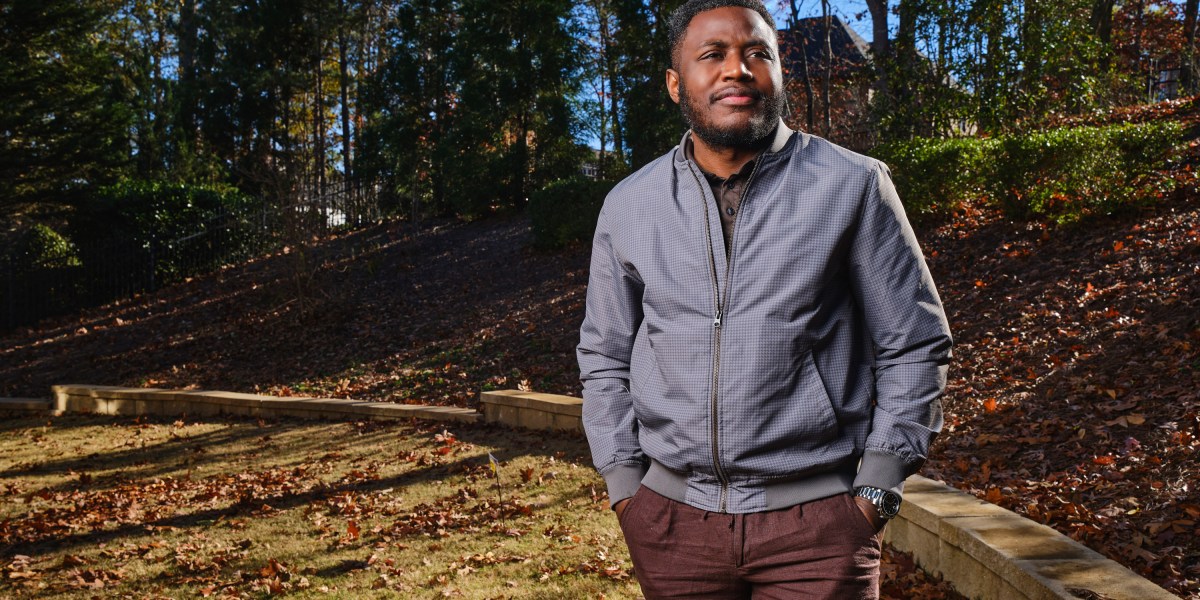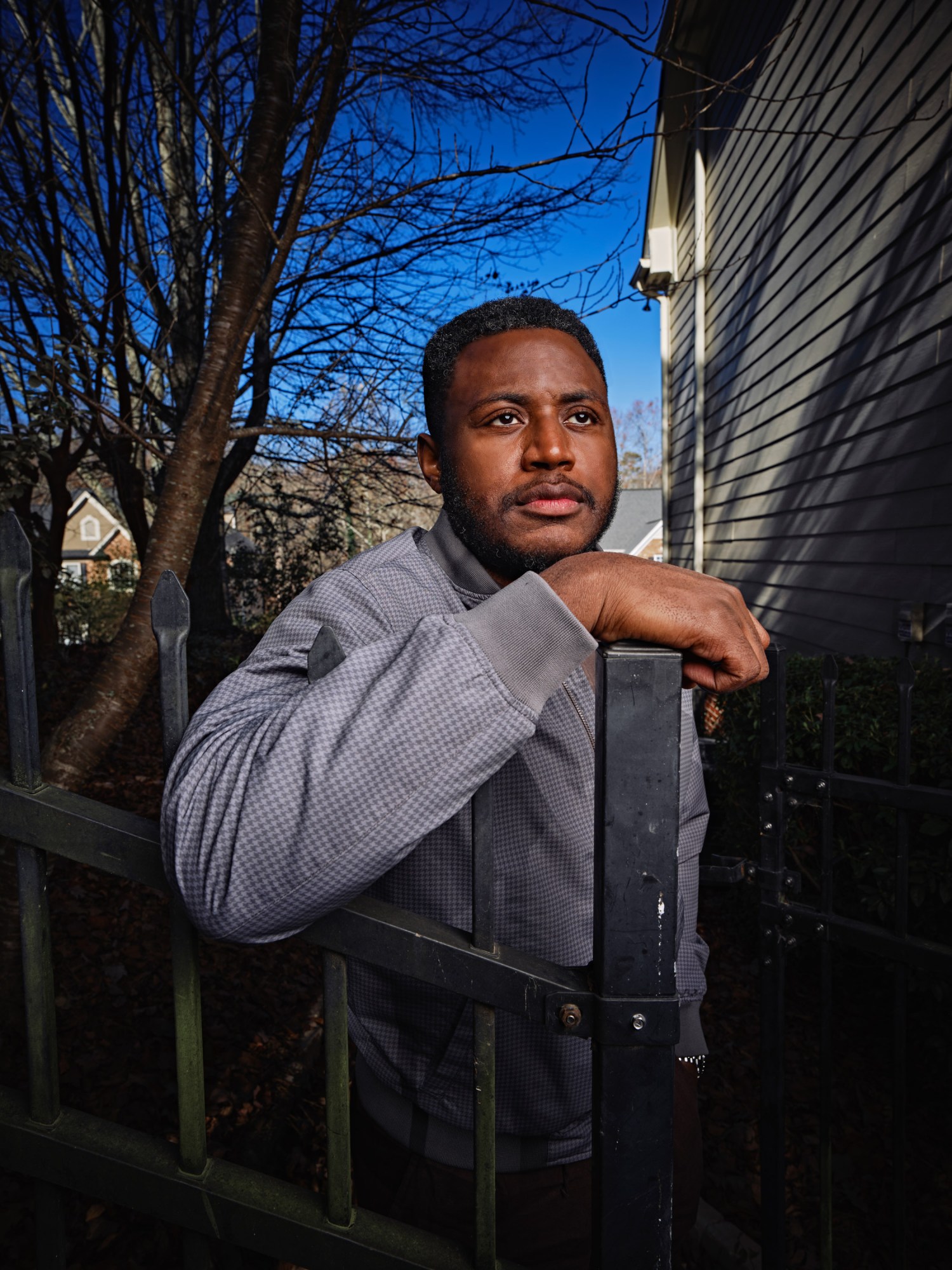
I received the new gene-editing drug for sickle cell disease. It changed my life.
As a patient enrolled in a clinical trial for Vertex’s new exa-cel treatment, I was among the first to experience CRISPR’s transformative effects.
I received the new gene-editing drug for sickle cell disease. It changed my life.
As a patient enrolled in a clinical trial for Vertex’s new exa-cel treatment, I was among the first to experience CRISPR’s transformative effects.By
December 4, 2023

MATT ODOM
On a picturesque fall day a few years ago, I opened the mailbox and took out an envelope as thick as a Bible that would change my life. The package was from Vertex Pharmaceuticals, and it contained a consent form to participate in a clinical trial for a new gene-editing drug to treat sickle cell disease.
A week prior, my wife and I had talked on the phone with Haydar Frangoul, an oncologist and hematologist in Nashville, Tennessee, and the lead researcher of the trial. He gave us an overview of what the trial entailed and how the early participants were faring. Before we knew it, my wife and I were flying to the study site in Nashville to enroll me and begin treatment. At the time, she was pregnant with our first child.
I’d lived with sickle cell my whole life—experiencing chronic pain, organ damage, and hopelessness. To me, this opportunity meant finally taking control of my life and having the opportunity to be a present father.
The drug I received, called exa-cel, could soon become the first CRISPR-based treatment to win approval from the US Food and Drug Administration, following the UK’s approval in mid-November. I’m one of only a few dozen patients who have ever taken it. In late October, I testified in favor of approval to the FDA’s advisory group as it met to evaluate the evidence. The agency will make its decision about exa-cel no later than December 8.
Related Story
The first CRISPR cure might kickstart the next big patent battleVertex Pharmaceuticals plans to sell a gene-editing treatment for sickle-cell disease. A patent on CRISPR could stand in the way.
I’m very aware of how privileged I am to have been an early recipient and to reap the benefits of this groundbreaking new treatment. People with sickle cell disease don’t produce healthy hemoglobin, a protein that red blood cells use to transport oxygen in the body. As a result, they develop misshapen red blood cells that can block blood vessels, causing intense bouts of pain and sometimes organ failure. They often die decades younger than those without the disease.
After I received exa-cel, I started to experience things I had only dreamt of: boundless energy and the ability to recover by merely sleeping. My physical symptoms—including a yellowish tint in my eyes caused by the rapid breakdown of malfunctioning red blood cells—virtually disappeared overnight. Most significantly, I gained the confidence that sickle cell disease won’t take me away from my family, and a sense of control over my own destiny.
Today, several other gene therapies to treat sickle cell disease are in the pipeline from biotech startups such as Bluebird Bio, Editas Medicine, and Beam Therapeutics as well as big pharma companies including Pfizer and Novartis—all to treat the worst-suffering among an estimated US patient population of about 100,000, most of whom are Black Americans.
But many people who need these treatments may never receive them. Even though I benefited greatly from gene editing, I worry that not enough others will have that opportunity. And though I’m grateful for my treatment, I see real barriers to making these life-changing medicines available to more people.
A grueling process
I feel very fortunate to have received exa-cel, but undergoing the treatment itself was an intense, monthslong journey. Doctors extracted stem cells from my own bone marrow and used CRISPR to edit them so that they would produce healthy hemoglobin. Then they injected those edited stem cells back into me.It was an arduous process, from collecting the stem cells, to conditioning my body to receive the edited cells, to the eventual transplant. The collection process alone can take up to eight hours. For each collection, I sat next to an apheresis machine that vigorously separated my red blood cells from my stem cells, leaving me weakened. In my case, I needed blood transfusions after every collection—and I needed four collections to finally amass enough stem cells for the medical team to edit.
The conditioning regimen that prepared my body to receive the edited cells was a whole different challenge. I underwent weeks of chemotherapy to clear out old, faulty stem cells from my body and make room for the newly edited ones. That meant dealing with nausea, weakness, hair loss, debilitating mouth sores, and the risk of exacerbating the underlying condition.

MATT ODOM
My transplant day was in September 2020. In a matter of minutes, a doctor transferred the edited stem cells into me using three small syringes filled with clear fluid. Of course, the care team did a lot to try and make it a special day, but for me that moment was honestly deflating.
However, the days and months since have been enriching. I’ve escaped from the clutch of fear that comes from thinking every occasion could be my last. Noise and laughter from my 2-year-old twin daughters and 4-year-old son echo through my home, and I’ve gained immense confidence from achieving my goal of being a father.
It’s clear to me from my experience that this treatment is not made for everyone, though. To receive exa-cel, I spent a total of 17 weeks in the hospital. Not everyone will want to subject themselves to such a grueling process or be able to take time away from family obligations or work. And my treatment was free as part of the trial—if approved, exa-cel could cost millions of dollars per patient.
Another potential barrier is that some people become enmeshed with their chronic disease. In many ways, your disease becomes part of your identity and way of life. The community of people with sickle cell disease—we call ourselves warriors—is a source of strength and support for many. Even the promise of a better life from a novel technology may not be strong enough to break that bond.
From few, to many
Other challenges are society-wide. In advancing new treatments, the US medical industrial complex has too often left a trail of systemic racism and unethical medical practices in its wake. As a result, many Black Americans mistrust the medical system, which could further suppress turnout for new gene therapies.Related Story
Three people were gene-edited in an effort to cure their HIV. The result is unknown.CRISPR is being used in an experimental effort to eliminate the virus that causes AIDS.
Global accessibility has also not been a priority for most of the companies developing these new treatments, which I feel is a mistake. Some have cited the lack of health-care infrastructure in sub-Saharan Africa, which houses about 80% of all sickle cell disease cases globally. But that just sounds to me like a convenient excuse.
The options for treating sickle cell disease are very limited. Denying access to such a powerful and transformative treatment based on someone’s ability to pay, or where they happen to live, strikes me as unethical. I believe patients and health-care providers everywhere deserve to know that the treatment will be available to those who need it.
Conducting gene therapy research and clinical trials in African populations could allow for a more comprehensive understanding of the genetic diversity of sickle cell disease. This knowledge may even contribute to the development of more effective and tailored therapies—not only for Africans, but also for people of African descent living in other regions.
Even as a direct beneficiary of gene therapy, I often struggle with not knowing the full consequences of my actions. I fundamentally, at a cellular level, changed who I am. Where do we draw the line at playing God? And how do we make the benefits of a God-like technology such as this more widely available?
Jimi Olaghere is a patient advocate and tech entrepreneur.




